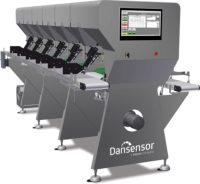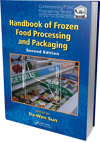Industry Q&A: Inspection & Testing
MAP Leak Detection Gets Faster, Easier, Data-Driven


Flexible Packaging caught up with Bill Burnard, INFICON’s vacuum control sales and business development manager, North America, for a chat about the company’s Contura S400 leak detector, which made its N.A. debut at PACK EXPO.
INFICON is new to the packaging industry. Can you talk a bit about the company and why it has chosen now to dive into the North American packaging market?
A: (INFICON’s) history goes back to the mid-1800s. So while we’re not a household name in the packaging industry, we do have a pretty long history. We’re a vacuum-centric company, so what we do largely centers around vacuum-related matters. (The Contura S400) happens to be a vacuum-related leak detector.
We are the worldwide leaders in leak detection for the automotive industry, the refrigeration and air conditioning industry, and various industrial manufacturing processes. So this is an area where we have an enormous amount of expertise. It’s taken us a little while to innovate something that we felt really had high potential technologically and value-wise. (PACK EXPO) is the North American entry into the market. We’ve been selling it in Europe for a couple of years, and have had enough success where we’re going after the much larger fish in the North American market.
Can you explain how the Contura S400 works?
A: It’s relatively simple. It will test a variety of packages, a variety of sizes and shapes. So essentially what you do, you set your package in the chamber, close the lid and basically it draws a vacuum around the container. The membrane actually collapses around the package, and that’s to support the package. It draws a very high vacuum as compared to a water bath. What happens in (water baths) is that the bag explodes under that type of pressure. But in this, because the membrane collapses around it, it contains it so you don’t strain your seals. It’s simply a matter of opening and closing, putting it in there and it draws the test. If gas leaks out of the package, it changes the pressure inside the vacuum chamber and we’re able to correlate that to an exact leak rate.
What about its benefits?
A: We get a quantifiable leak rate. This is one of the really specific features or values that is able to be derived from this particular equipment. It gives you an actual quantifiable leak rate, rather than a heuristic or bubble test type of scenario. You can start compiling data, you can export and now you can start building statistical process control, and start building traceability or more accurately calculate what is a good leak rate to either extend the shelf life or ensure the safety of your product for some period of time.
Micro leaks are a big deal, but a lot of times machines will miss the gross leaks if you’re focused on testing micro leaks…. If it has a gross leak, it’s able to find that as well as determine the micro or the capillary types of leaks.
Was ease of use a big objective during the design process?
A: The ease of use is a big deal, but the uniformity of use is really one of the primary benefits. If you’re operating a bubble test, the testing from day-to-day or hour-to-hour can be quite different. (This) precisely measures, it’s super, super easy and it gives you quantifiable data. Those are the real heavy hitters, besides the fact that it takes a matter of seconds to do this test.
Looking for a reprint of this article?
From high-res PDFs to custom plaques, order your copy today!








